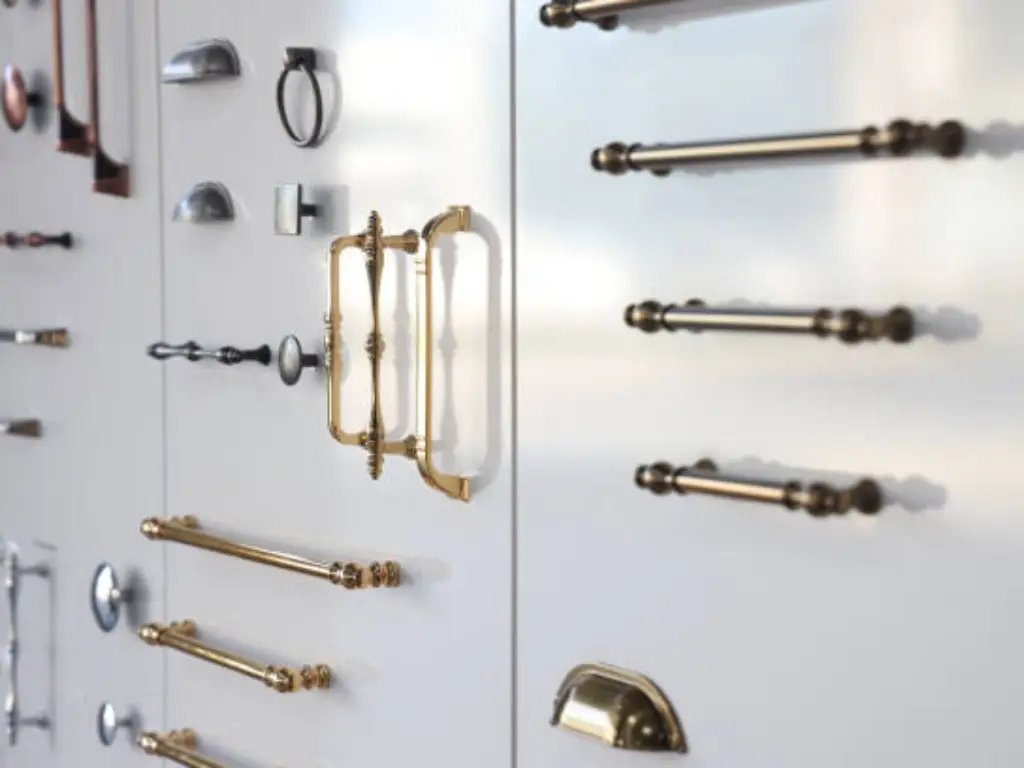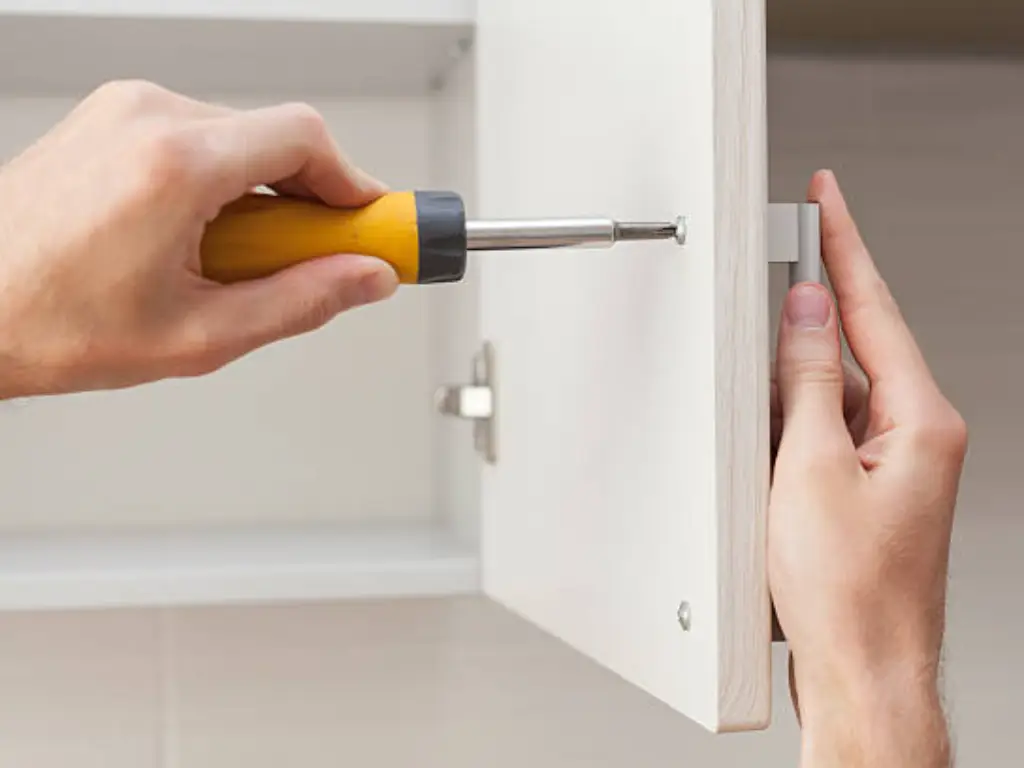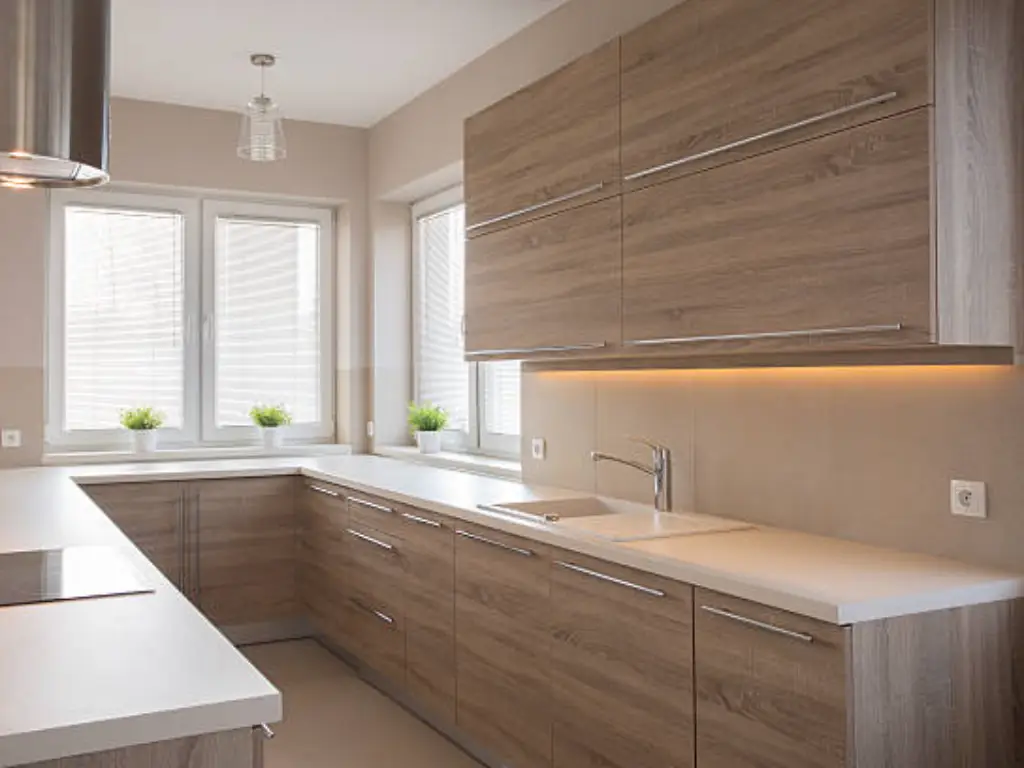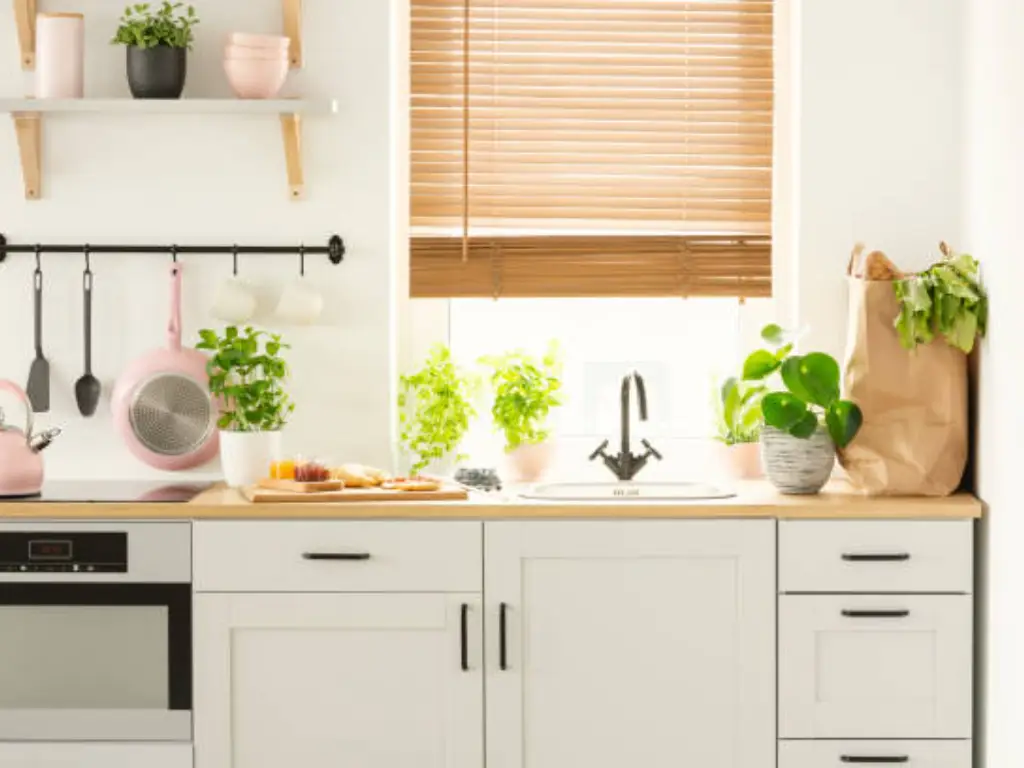Introduction
Regardless of the scope of your project, the devil is in the details when it comes to creating the perfect style for your space. One of these crucial details is the exact placement of your hardware on the cabinetry. The appropriate location of door knobs, pulls, and handles on your kitchen and bathroom cabinets or in any room with cabinetry hardware can be a game changer when it comes to both the aesthetics and functionality of your space. It is a minor alteration that, however, may make a big difference.
In this comprehensive guide, we’ll cover all the necessary stuff from types of hardware to the best techniques of installation. We’ll not only share some design ideas to show you how to pick the right hardware for your space but also give you some tips on choosing the hardware that suits your personal preference. By reading this article, your cabinet handle will have the professional look, and you will have learned the necessary skill and courage to give them the thoughtful attention with a lot of detail. Let’s dive in!
The Significance of Choosing the Right Cabinet Hardware
How Cabinet Hardware Influences Aesthetics
Your cabinet hardware selection is the key player in the determination of the final look of the space. The style, finish, and location of the pulls for the cabinet can either add to the look you’re trying to achieve, or take it away from you. For instance, if you prefer a modern look, sleek pulls would be the right choice, while if you tend to traditionalism, classic knobs are a must.
The Role of Hardware in Cabinet Functionality
Beyond the looks, the way the hardware is positioned also matters a lot in the functionality of the cabinets and drawers. The right hardware, such as soft-close hinges or drawer slides, allows your cabinets and drawers to open and close properly and will prevent damage to the cabinetry in the long run. You should take into account variables such as drawer size and weight, the frequency of the use, and the accessibility demands of the house when choosing beautiful cabinets and proper cabinet hardware placement.

Types of Cabinet Hardware: Knobs, Pulls, and Handles
When it comes to cabinet hardware type, there are three main types to choose from: knobs, handles, and pulls. These are small, round or square knobs that screw up to the cabinet door or drawer. They’re an adaptable and easy-to-use option that look good on either doors or drawers.
Pulls, as opposed to knobs, are larger and have a more elongated shape, and are attached to the cabinet using two screws. They range in designs from modern and sleek to traditional and ornate and are perfect for increasing the drawer size or adding more depth to your cabinetry. Knobs and pulls are like each other, but they are more angular in shape and attach to the cabinet with two or more screws. They are typically used on the bigger and heavier doors and drawers, and give a more industrial and bolder look to your place.
Select the Right Material with Cabinet Style
When you are deciding cabinet hardware, it is important to think of both the material and the style of the hardware. The material you go for should blend well with the overall look and feel of the cabinetry while also having the capacity to withstand the daily use. Cabinet hardware can be made of metal (for example, brass, chrome, nickel, and stainless steel), glass, crystal and wood. Besides the fact that each material has its own unique properties, they can be used to create a certain atmosphere in your space.
As an example, metal hardware is both long-lasting and flexible that’s why it is a good choice for the different cabinet types. Brass and chrome are often integrated into classic or traditional designs while nickel and stainless steel are the favorites among the modern or contemporary styles. A glass or crystal hardware is a perfect choice for cabinets which are more on the luxurious and upscale side, but they can also add elegance and sophistication to a more standard cabinet. Contrarily, wooden hardware can help create warmth and texture, which is just what these cabinets need to have a more rustic or natural look. To summarize, select a material that matches the style of your cabinets, and at the same time, expresses your personality and the general design of the space.

Cabinet Hardware Placement for Doors
Knob placement on doors
When deciding where to put cabinet handles on doors, it is imperative to consider the type of the cabinet and personal taste. An usual cabinet knob placement for upper cabinet doors is the centered position on the door rail, or the horizontal part of the cabinet frame. The placement for this device is usually 2 1/2 to 2 3/4 inches from the bottom of the door and allows users to access it easily.
Generally, knob placement on the lower cabinets comes in the centres of the doors stiles, which are the vertical part of the cabinet frame. To give you ample room for head movement while entering the vehicle, the handle is usually placed 2-1/2 to 3 inches from the upper edge of the door, so you can reach it without bending.
Pull placement on doors
When it comes to pull placement on cabinet doors, there are two main options: both vertical and horizontal. Vertical fixing consists of the mechanism being mounted in the door stile middle with the screws set vertically. This is a convenient way to place door handles and it is very suitable for the taller cabinet doors. Also, it adds a touch of clean and modern to the kitchen design. It’s also a good choice for cabinets that have multiple details or moldings. It helps to keep a sense of balance when it comes to visual details.
A horizontal installation, on the contrary, is the process of placing the pull with the screws being positioned horizontally on the door rail. Set of cabinet pulls like this is a great option for wider cabinet doors that will make the overall look more traditional or classic. It’s also a convenient choice for the lower cabinets as it reduces the need to raise the hand too high to open it.
However, these are just general rules, and eventually, your choices on the placement of cabinet pulls are based on your taste and the style of your cabinetry. Some designers might choose a slightly bigger or smaller height for their own style, others might choose a more unusual placement, even in the upper corner of the door.
| Cabinet Type | Knob Placement | Pull Placement |
| Upper Cabinets | 2.5″ – 3″ from bottom edge, centered on door stile | Centered on door stile, 2.5″ – 3″ from bottom edge (vertical) or centered on door rail (horizontal) |
| Lower Cabinets | 2.5″ – 3″ from top edge, centered on door stile | Centered on door stile, 2.5″ – 3″ from top edge (vertical) or centered on door rail (horizontal) |
| Tall Cabinets (e.g., pantry) | Centered on door stile, 36″ – 44″ from floor | Centered on door stile, 36″ – 44″ from floor (vertical) |

Cabinet Hardware Placement for Drawers
Drawer Cabinet Hardware Placement
The location of knobs and handles on kitchen cabinets drawers vary depending on the size and style of the drawer as well as personal taste. Smaller drawers like the ones in the upper cabinets and bathroom vanities will benefit from a single knob positioned in the center of the drawer. This cabinet knob positioning makes the design look neat and minimalistic, and is convenient to grab from any angle.
For larger drawers, like the ones that are usually in the lower cabinets or dresser drawers, double knob placement is a common choice. This is achieved by positioning two knobs on the same distance from the drawer front center, which should be 1-1/2 to 2 inches from the top of the drawer. Double knob placement gives a more balanced look and may be a good choice for opening heavier drawers.
A further consideration is the style of the knob when you are determining the placement of knobs on drawers. On the other hand, if you opted for the bigger, more decorative knob, a single placement could be enough to make a statement. Besides, if you have picked a smaller and less prominent knob, multiple placements can be an effective way of creating visual effect and balance.
Pull placement on drawers
How to decide on where the cabinet handles will go on drawers is an issue that combines both functional and stylistic aspects. Centered placement, where the pull is placed in the center of the front of the drawer with the screws installed horizontally, is the most popular mounting choice that fits most drawer sizes and styles. By placing the cabinet pulls in this arrangement, the designer has achieved the effect of visual balance and symmetry, and it is obvious from any angle.
Offset placement, where the handle is installed on the front of the drawer with a slight shift to the side, is a more contemporary and up-to-date style. The positioning of the drawer pulls is usually done with the longer pulls and it requires installing the pull approximately one-third of the way down from the top edge of the drawer front. The placement of the offset can often lead to a visual interest, and this is why it is usually a good choice for larger drawers or the drawers with a modern style.
This is the question when deciding whether centered or decentralized. The final position of drawer pulls, you should think about the total style and size of your drawers, the length of the pull and also its style. The long pull may be more attractive with an offset position, on the contrary, the shorter pull or traditional pulls may be better with a centered position for an easy way to achieve balance. However, the main thing is to bring some harmony and proportion into the design of your cabinets so that they would look good in the room, and following these best tips can help you achieve that.
| Drawer Size | Knob Placement | Pull Placement |
| Small Drawers (< 12″ wide) | Single knob, centered on drawer front | Centered on drawer front, 1″ – 2″ from top edge |
| Medium Drawers (12″ – 24″ wide) | Single knob, centered on drawer front or two knobs, evenly spaced 1.5″ – 2″ from top edge | Centered on drawer front, 1″ – 2″ from top edge |
| Large Drawers (> 24″ wide) | Two knobs, evenly spaced 1.5″ – 2″ from top edge | Centered on drawer front, 1″ – 2″ from top edge or two pulls, evenly spaced 1.5″ – 2″ from top edge |

Specialty Cabinet Hardware Placement
If there is a discussion about specialty cabinet hardware, placement is very important to achieve both functionality and style. Appliance pulls, intended for heavy duty doors, usually are placed vertically in the center of the door. The top screw is located about 2-1/2 to 3 inches from the top edge of the door, while the bottom screw is set up approximately 2-1/2 to 3 inches from the bottom edge. Such placing offers the possibility of simple opening and shutting of these frequently used doors.
Finger pulls, as opposed to other options, are a more quiet action that gives a minimalistic look. Such pulls are recessed into the door or drawer front and therefore, they are very much used in modern or contemporary kitchen cabinets. They are typically placed in the middle of the door or drawer front, the top edge of the pull sits in line with the top edge of the door or drawer. This positioning ensures that the cover is smooth without any bumps while still being able to see the content within.
Cup pulls, also known as bin pulls, which commonly have a special shape and are easy to hold on to, are often used for drawers or cabinet doors that are frequently opened, such as in pantries and utility rooms. These pulls are generally installed in the center of the drawer fronts or doors and the top edge of the pull is placed about 2-1/2 to 3 inches from the top edge of the drawer or door. A placement like this enables easy use along with good proportion and visual harmony. It is important to take into account the fact that you need to consider the practical and aesthetic aspects when you select and install specialty cabinet hardware to ensure functionality and style.
Cabinet Hardware Sizing Guidelines
Knob sizing
Selecting the proper knob size for your cabinets is not an easy task. There are a few general rules to keep in mind though. Knobs with diameter 1 to 1-1/4 inches are a good choice for small drawers or cabinet doors (less than 24 inches wide). For wider drawers and doors (24 inches and more), knobs that are 1-1/4 to 1-1/2 inches in diameter are consequently the most appropriate.
Pull sizing
Consider the size of the pull when selecting the pulls for your cabinets, it should be equivalent to the size of the drawer or door. For small drawers or doors (less than 24 inches wide), pulls that are 3 to 4 inches in length make a good choice. For large drawers or doors (24 inches or broader), pulls that are 4 to 8 inches long are the best choices. Another aspect that needs to be factored in is the distance that the hook will be projected from the surface of the drawer or the door. A good guideline is to take a projection that’s as half as the pull’s length.

A Beginner’s Guide to Cabinet Hardware Placement
Tools and Materials Needed for Installation
Before you begin installing your cabinet hardware, it’s important to gather all the necessary tools and materials. Here’s what you’ll need:
- Drill with a 3/16-inch drill bit
- Screwdriver
- Tape measure
- Pencil
- Level
- Knobs, pulls, or handles
- Construction screws or wood screws (depending on your cabinet material)
Step 1: Marking the Spot for Knobs and Pulls
The first step to install cabinet hardware is to mark the positions where you want to mount the knobs or handles. To measure the placement of cabinet pulls, use a tape measure based on the earlier guidelines and make a pencil mark on the cabinet door or drawer front where the pulls should be.
For the knobs, you will want to just make one mark in the center where you will place it. To do pulls, you should mark two places, one for each screw. Make sure to use the level to maintain that the marks are straight and even.
Step 2: Drilling Holes with Accuracy
After you have marked out the place for the hardware, you can now drill the holes. When you are done drilling, use a 3/16 inch bit drill to drill through the pencil marks you made in step 1. Make sure to keep the drill level and align it with the mark to get the holes even and true.
If you are working on installing hardware on a drawer front, be certain to open the drawer and place a piece of scrap wood inside to avoid a drill bit going through the back of the drawer. This will provide a basis for a neat, professional installation.
Step 3: Securing the Hardware Firmly
The drilling of the holes is finally done, now we will install the hardware. Screw the knob or pull through the backside of the cabinet door or drawer front. Then, screw them into the front of the cabinet. Make sure you use the right screws for the material used in your cabinets – metal cabinets need construction screws and wooden cabinets use wood screws.
Apply a screwdriver to tighten the screws in order to make the hardware secure, but do it with caution so that the screws do not get overtightened and stripped off or the cabinet is damaged. Then, install the hardware, and after that, give the door or drawer a try to be certain that everything is functioning properly.

Design Tips for Enhancing Your Space with Cabinet Hardware
Matching Hardware with Cabinet Colors and Styles
Color and style of your cabinetry are crucial factors to consider when selecting the cabinet hardware. The hardware should be in harmony with the cabinets and should serve the purpose of improving the looks of your space. To illustrate, if you have dark and traditional cabinets, oil-rubbed bronze or antique brass hardware can add a bit of a warm and sophisticated touch to it. In case, you have light, modern cabinets, sleek chrome or brushed nickel handles can make your kitchen look as fresh as a daisy.
In addition to style, you should also factor in the material of your cabinets when picking out hardware. If you have shaker cabinets, the most popular type of cabinet, the knobs or pulls with clean lines can be adopted to fit in with the minimalist style. In case you have a more ornate and traditional cabinet, more decorative hardware with extensive details can complete the classic look.
Trends in Cabinet Hardware That Elevate Your Kitchen
If you are searching for ways to give your kitchen a contemporary and stylish update, then you should consider blending some of the latest trends in cabinet hardware. Here are a few popular options:Here are a few popular options:
- Matte black: Matte black hardware is a very sleek and modern choice that can add a very bold contrast to light-colored cupboards.
- Mixed metals: Creating contrast and visual interest by using different metals, such as brass and chrome, in your cabinetry is one way of adding depth to your design.
- Oversized pulls: Many fashionable, striking pulls can be used to add a flavor of drama and identity to your cabinets.
- Leather pulls: Leather pulls are a fantastic, uncommon selection that can bring comfort and structure to your cabinets.
Maintenance Tips for Cabinet Hardware
In order to maintain your cabinet hardware always in top shape, you need to clean and keep it regularly. Here are a few tips:Here are a few tips:
- Using a soft, wet cloth, wipe off hardware that is dirty and grimy.
- For more stubborn stains or accumulation, try using a mild soap and water solution and scrub it lightly with a soft-bristled brush.
- Do not use cleansers that are harsh or scrubbers that can be abrasive, since they can scratch or damage the finish of your hardware.
- You should periodically check screws and tighten those that have been loosened over time to prevent damage to your cabinets as well.
Conclusion
The position of the cabinet hardware is a seemingly small detail, but it can make a huge difference in terms of the overall look and functionality of your kitchen. Do not forget to take into account such issues as the size and design of your cabinets, the general look of your space, and the functionality of your hardware when making your decisions. In addition, do not be afraid of getting creative and trying out different styles and finishes to achieve the perfect look for your home.
By taking a few minutes to plan and the care in the choice of the right hardware, you can change your cabinets from simple to amazing. Therefore, get the toolbox ready, pick your hardware and get ready to improve your space’s style!






